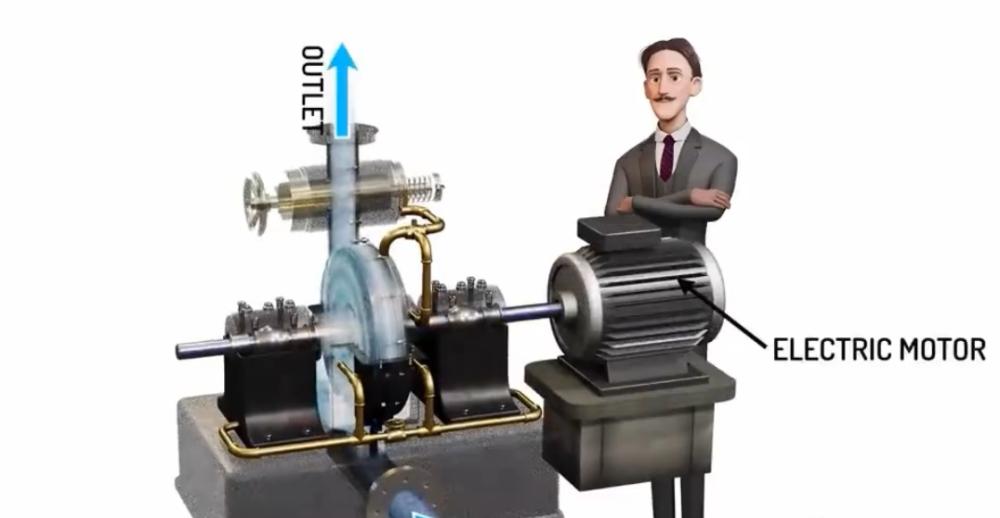The Tesla turbine is a bladeless turbine powered by fluid shear, invented by legendary scientist Nikola Tesla, patented in 1913.

It is called a bladeless turbine because it applies the boundary layer effect rather than the traditional direct impact of a fluid on the turbine blades.
Tesla expects the machine to be 97% efficient, which is a terrible efficiency, and many people pay special attention to it. During the experiment, Tesla found that at 35,000 revolutions per minute, the material strength of the disc was no longer enough to withstand the huge centrifugal force generated.
To increase the efficiency to more than 90%, it is necessary to use a very high speed, which usually takes more than 50,000 revolutions per minute, which is too high for the material strength.
In the 1950s, Warren Rice tried to recreate Tesla's experiments, but he didn't build his turbines strictly according to Tesla's patented design in early tests (the machine was neither a Tesla multi-stage turbine nor a Tesla-designed nozzle). Rice's single-stage experimental system works with air.
Rice's tests in an earlier report showed that the efficiency of single-stage turbines was 36 to 41 percent. He said that if it is strictly tested according to Tesla's design, it is expected that the efficiency may be higher.
Before Rice retired, he completed the final testing of Tesla turbines and did a lot of laminar flow data analysis of multistage turbines. He declared that the design was extremely efficient (not the overall system efficiency after connecting the machines), and in 1991 published a report entitled "Tesla's Turbines", which made the following statement: With the correct use of the results of the analysis, the efficiency of rotor laminar flow use is very high, even more than 95%.
However, in order to achieve high rotor efficiency, the flow rate must be as small as possible, which means that the price of high efficiency is that there must be a sufficient number of turbo discs to form a huge rotor.
Next, let's take a short look at the engineering principles behind Tesla's turbines, why such powerful mechanical properties are difficult to promote:
Therefore, it seems unrealistic for Nikola Tesla to think that the 6-inch model has an efficiency of 97%. And we know that modern multi-stage blade turbines usually achieve 60% - 70% efficiency, while in practice large steam turbine generator sets often show more than 90% efficiency.
Here's a handmade Tesla turbine that revs more than 40,000 rpm when tested:
More than 100 years ago, Tesla was able to design such a brain-hole machine, and when everyone has time, everyone can do it and play...
What do you think? Welcome to comment and forward ~
If you like it, just click on it
For more content, pay attention to the VX public account: Engineering Star